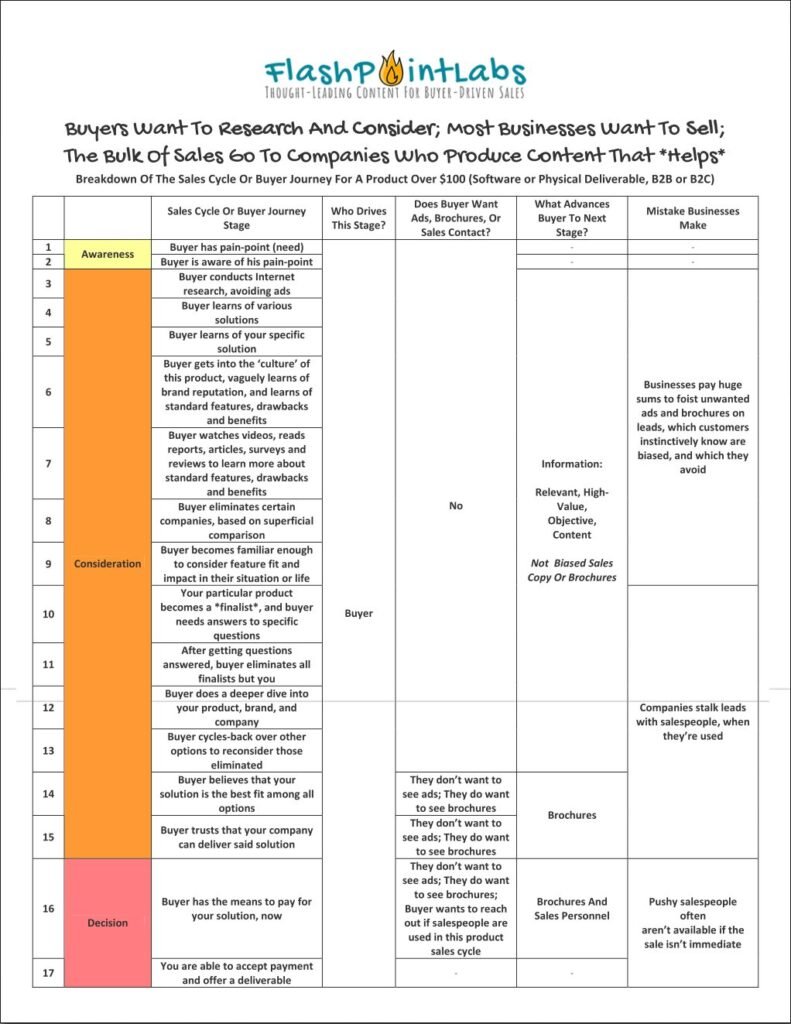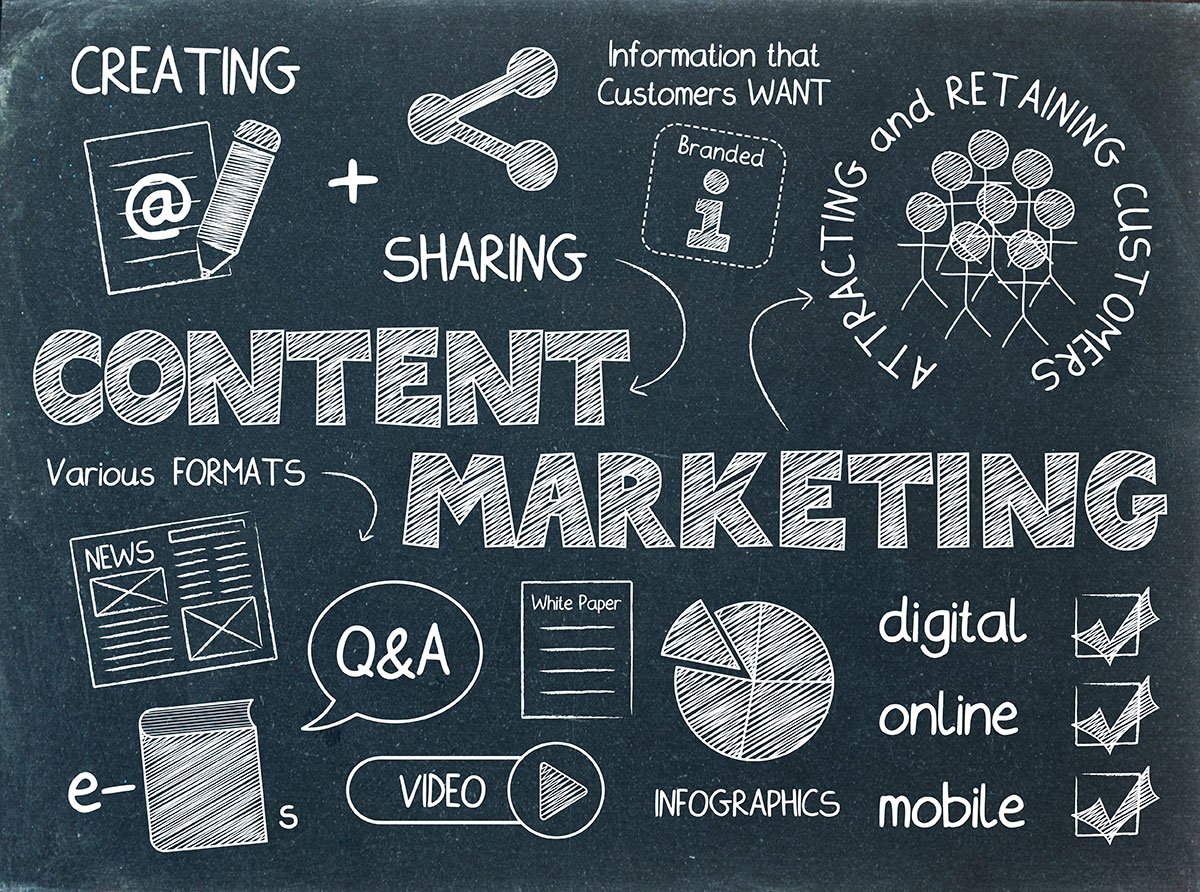Who Controls The Buyer's Journey? Why, Buyers, Of Course
The jury is in: sales are buyer-driven. Conversions happen at the convenience, prerogative, and discretion of the buyer. But it isn’t just the final conversion threshold that’s the buyer’s to choose or not. Every point along the Buyer’s Journey, the buyer has almost total control. Humbling, isn’t it?


FlashPointLabs' Analysis Of The *Things That Have To Happen* For A Buyer To Choose You
We analyzed Hubspot’s Buyer’s Journey (Awareness, Consideration, Decision, Conversion) and actually broke it down, revealing additional stages and factors.
There is no single Buyer’s Journey – every sale is different. But there are patterns that emerge as a buyer comes to a decision about a pain point solution.
Some interesting conclusions came from this analysis, including:
- While buyers always have the prerogative to ignore or silence you, or abandon pursuit of your content, it is only at the very end of the buyer journey are customers become interested in seller-centric copy, or hearing companies talk about themselves (via brochures, ads, flattering comparisons, sales copy, or calls from a salesperson). In other words, that’s when they choose to listen to you talk about yourself, after they have already decided they like you or are interested in your solution.
- The wending, seemingly random, Buyer’s Journey is actually extremely logical. This is revealed through any analysis of a search history. People start with a problem, and may approach a solution in a variety of ways. They could shop for a vacuum, or a cheap vinyl floor. These both solve the problem of dirty carpets. They have known unknowns, and discover unknown unknowns. They go back, and re-compare. They remove solution candidates based on politics. They compare on common feature sets, even emerging conventions.
- During this time, the bulk of the Buyer’s Journey, overwhelmingly, buyers seek objective content, including photos, recommendations, analysts reports, third-party reviews, recommendations, studies, reports, and helpful articles.
- While it’s true that, apart from having an amazing product, great customer service, you can’t do much to change impressions of your product/service on review or analysts sites. But you can make a beautiful website, provide a great web experience, and offer helpful content for people with questions (as described in They Ask, You Answer). You can share your expertise, freely and upfront, and build trust and authority that way.
For 95% of B2B and B2C purchases over $100, buyers perform a series of Internet searches. These are your options:
- You can push the very interruptive, seller-centric, ads buyers avoid, 99% of the time, and – when you manage to ‘trap’ one of them – route them to a seller-centric, sales-focused website that isn’t helpful to them. You can justify this approach by telling yourself that your solution helps them.
- Or, you can create and freely offer the helpful, buyer-centric, content buyers are searching for, 95% of the time, and make that freely content available on your website. You can make offers through your email list. And you can even place ads with offers, if you want favor from the Search Engine Gods (Google).
You can produce content and pull buyers, or you can push ads on them.
Which converts more often? Which feels better to execute? Which yields lasting returns? Which makes you an authority? Which offers greater returns?






